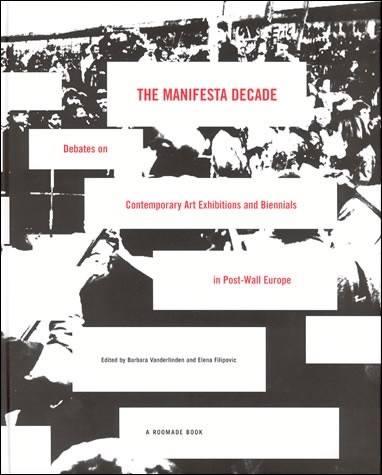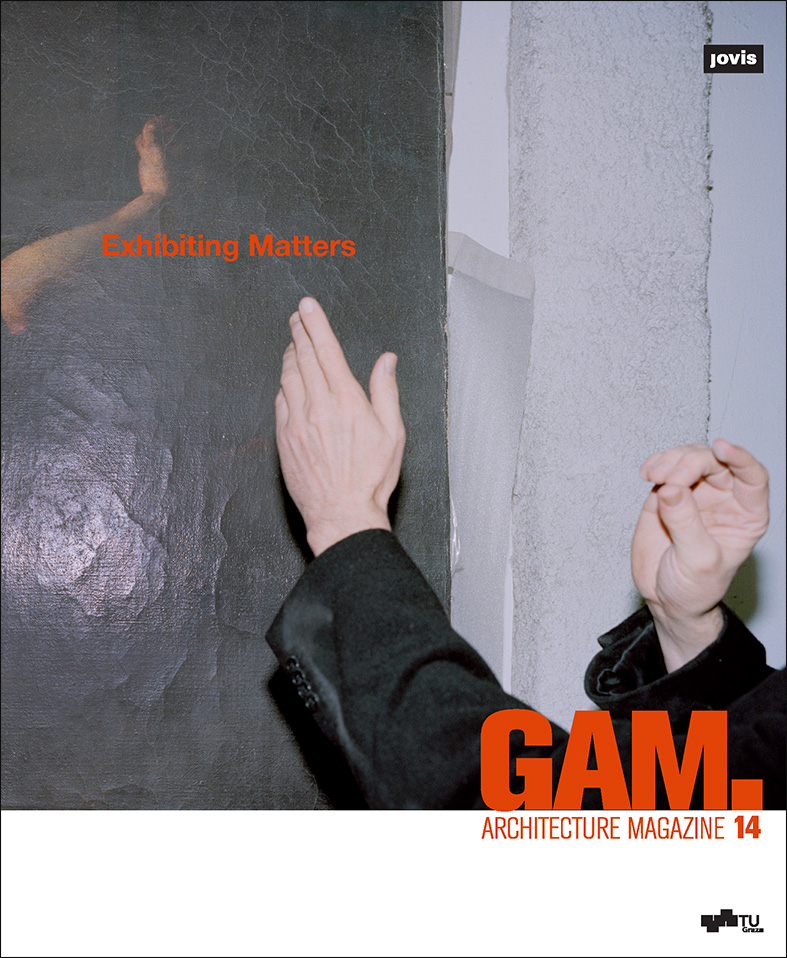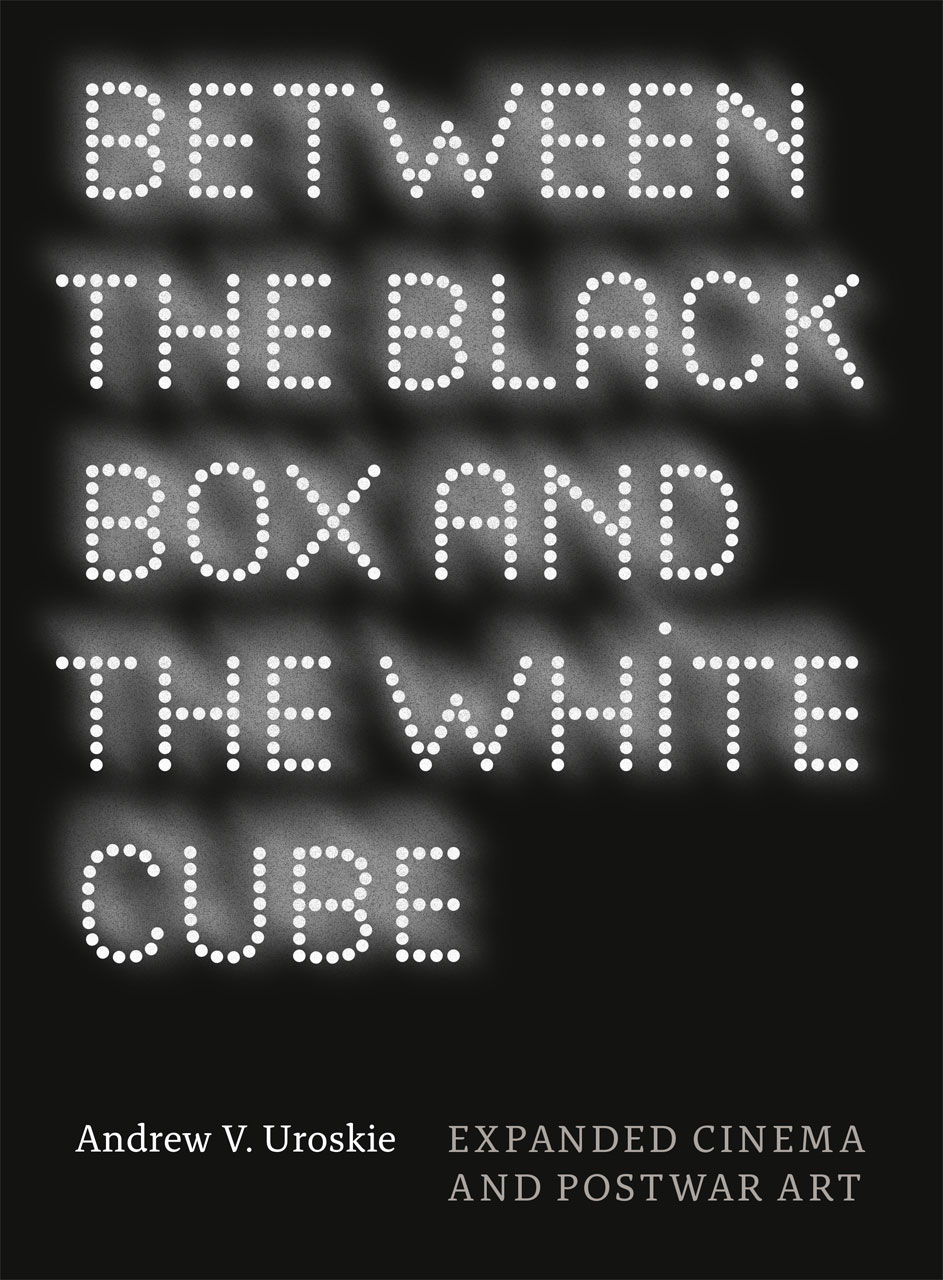Barbara Vanderlinden, Elena Filipovic (eds.): The Manifesta Decade: Debates on Contemporary Art Exhibitions and Biennials in Post-Wall Europe (2005)
Filed under book | Tags: · art history, contemporary art, europe, exhibition, globalisation

“Reflections from curators, historians, philosophers, anthropologists, architects, and writers on the cultural and political conditions of European exhibition practice since the fall of the Berlin Wall.
Manifesta, the first itinerant European Biennial for Contemporary Art, emerged in a post-wall, globalizing Europe. Founded in 1993, it organized traveling exhibitions aimed at providing a new framework for cultural exchange and collaboration between artists and curators from across the continent. The Manifesta Decade marks Manifesta’s ten years of exhibits with original essays, unpublished images, and texts that not only document the different Manifesta exhibits but also examine the cultural, curatorial, and political terrain of the Europe from which they sprang.
Including contributions from philosophers, historians, and anthropologists, interviews with architect Rem Koolhaas and historian Jacques Le Goff, and essays by such curators and writers as Okwui Enwezor, Boris Groys, Maria Hlavajova, and Hans Ulrich Obrist, the collection traces the cultural and political developments of Europe in the 1990s. It reflects the debates incited by exhibitions such as Magiciens de la Terre, Documenta, and After the Wall and explores the changing roles of curators and artists in the new geo-political context. The issues discussed include the effect of communism’s collapse on Eastern Europe, the role of Biennials in the context of globalization, and the ephemerality of exhibitions versus the permanence of the museum. The book’s second section traces the history of Manifesta, from its conceptual foundations and contributions to artistic practices of the 1990s to the relationship of a roving Biennial to themes of multiculturalism, migration and diaspora. At a moment when biennials continue to proliferate worldwide, The Manifesta Decade takes Manifesta as a case study to look critically at the landscape from which new exhibition paradigms have emerged. The book’s 100 images, both color and black and white, include unpublished installation shots of each Manifesta exhibition.”
Publisher MIT Press, Cambridge, MA, with Roomade, Brussels, in collaboration with the International Foundation Manifesta, Amsterdam, 2005
ISBN 9780262220767, 0262220768
337 pages
Reviews: Aaron Schuster (Frieze, 2006), Veronica Davies (Art Book, 2007), Philipp Kaiser (ARTMargins, 2008).
Comment (0)GAM, 14: Exhibiting Matters (2018) [English/German]
Filed under catalogue, magazine | Tags: · architecture, art, exhibition

“The fields of art and architecture are currently witnessing an expansion of the exhibitionary complex: permanent and temporary exhibition spaces proliferate, blending with sites of consumption. Responding to this development, GAM.14 focusses on the act of exhibiting, which reconfigures the spatial limitations of the exhibition, thus creating dynamic sites of contestation and political confrontation. GAM.14 is a collection of current positions from the disciplines of art and architecture assembled around the conceptual effort to distinguish the act of exhibiting from exhibition, opening the potential of exhibiting as an exploratory space to address urgent social and political challenges of our time.”
With contributions by Bart De Baere, Ivana Bago, Ana Bezić, Nicolas Bourriaud, Maria Bremer, Ekaterina Degot, Ana Dević, Anselm Franke, Andrew Herscher, Christian Inderbitzin, Branislav Jakovljević, Sami Khatib, Wilfried Kuehn, Nicole Lai Yi-Hsin, Bruno Latour, Ana María León, Armin Linke, Antonia Majača, Doreen Mende, Ana Miljački, Museum of American Art in Berlin, Vincent Normand, Christoph Walter Pirker, Dubravka Sekuli, Antje Senarclens de Grancy, Katharina Sommer, Anna-Sophie Springer, Barbara Steiner, Kate Strain, Žiga Testen, Milica Tomić, Etienne Turpin, and What, How & for Whom/WHW.
Edited by Milica Tomić and Dubravka Sekulić
Publisher Jovis, Berlin, 2018
ISBN 9783868598544, 3868598545
299 pages
PDF (45 MB)
Comment (0)Andrew V. Uroskie: Between the Black Box and the White Cube: Expanded Cinema and Postwar Art (2014)
Filed under book | Tags: · art history, cinema, contemporary art, exhibition, expanded cinema, film, film history, lettrism

“Today, the moving image is ubiquitous in global contemporary art. The first book to tell the story of the postwar expanded cinema that inspired this omnipresence, Between the Black Box and the White Cube travels back to the 1950s and 1960s, when the rise of television caused movie theaters to lose their monopoly over the moving image, leading cinema to be installed directly alongside other forms of modern art.
Explaining that the postwar expanded cinema was a response to both developments, Andrew V. Uroskie argues that, rather than a formal or technological innovation, the key change for artists involved a displacement of the moving image from the familiarity of the cinematic theater to original spaces and contexts. He shows how newly available, inexpensive film and video technology enabled artists such as Nam June Paik, Robert Whitman, Stan VanDerBeek, Robert Breer, and especially Andy Warhol to become filmmakers. Through their efforts to explore a fresh way of experiencing the moving image, these artists sought to reimagine the nature and possibilities of art in a post-cinematic age and helped to develop a novel space between the “black box” of the movie theater and the “white cube” of the art gallery. Packed with over one hundred illustrations, Between the Black Box and the White Cube is a compelling look at a seminal moment in the cultural life of the moving image and its emergence in contemporary art.”
Publisher University of Chicago Press, 2014
ISBN 9780226842981, 0226842983
x+273 pages
Reviews: Amanda Egbe (Leonardo, 2014), Rick Sieber (ARLIS/NA Reviews, 2014), Matilde Nardelli (Visual Studies, 2015), Kenneth White (CAA Reviews, 2015), Michael Zryd (Millennium Film Journal, 2015), Riccardo Venturi (Critique d’art, 2016, French).
Comment (0)
